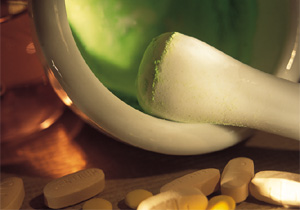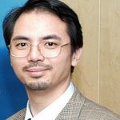Materia Medica - Important
Disclaimer
The information that is available at or
through this site is not intended directly
or by implication to either diagnose or
treat any medical, emotional, or
psychological condition or disorder. It
is always recommended that consultation
with local health care providers be
obtained for specific health or medical
concerns.
Pharmaceutical Name

Cortex Moutan
Botanical Name

Paeonia suffruticosa Andr.
Common Name

Moutan bark, Tree peony bark
Source of Earliest Record

Shennong Bencao Jing
Part Used & Method for Pharmaceutical Preparations

The roots are dug and gathered in autumn. After the fibrous roots have been removed, the roots are dried in the sun.
Properties & Taste

Bitter, pungent and slightly cold
Meridians

Heart, liver and kidney
Functions

1. To clear heat and cool blood; 2. To invigorate blood and resolve blood stagnation
Indications & Combinations

1. Febrile disease in which pathogenic heat enters the blood level manifested as fever, vomiting with blood, epistaxis, blood in the urine, maculopapule and deep red tongue proper. Moutan bark (Mudanpi) is used with Fresh rehmannia root (Shengdihuang), Rhinoceros horn (Xijiao) and Red peony (Chishao).
2. Late stage of febrile diseases with exhaustion of body fluids or yin deficiency manifested as fever at night, and subsiding in the morning, without presence of sweating, red tongue proper with scanty coating and thready, rapid pulse. Moutan bark (Mudanpi) is used with Anemarrhena rhizome (Zhimu), Fresh rehmannia root (Shengdihuang), Turtle shell (Biejia) and Sweet wormwood (Qinghao).
3. Blood stagnation manifested as amenorrhea, dysmenorrhea, hard masses, lumps, tumors and modules. Moutan bark (Mudanpi) is used with Peach seed (Taoren), Cinnamon twigs (Guizhi), Red peony (Chishao) and Poria (Fuling) in the formula Guizhi Fuling Wan.
4. Boil, carbuncles and furuncles. Moutan bark (Mudanpi) is used with Honeysuckle flower (Jinyinhua) and Forsythia fruit (Lianqiao).
Dosage

6-12 g
Cautions & Contraindications

Care should be paid when it is used during excessive menstruation or pregnancy.
Back
to Materia Medica
| 
 This website is published, edited and designed by Raymond Cheng,
and reflects only and only his personal views and opinions in his individual capacity.
The information available at this website is not intended
directly or by implication to either diagnose or treat any
medical, emotional, or psychological condition or disorder.
It is also not intended to create a physician-patient relationship
between you and I or between you and Wyith Institute™ and The Office of Dr Raymond K K Cheng.
The information here is not a substitute for advice and treatment provided
by your physician or by another healthcare professional.
It is always recommended that consultation with local healthcare providers
be obtained for any of your specific health or medical concerns.
Furthermore, any products that can be purchased (yet you can see I don't have much
to sell here) through advertisers' banners or through links to other websites
are not either explicitly or implicitly given any warranty or endorsement
by me, my colleagues, Wyith Institute™ or any of its associated businesses.
This website is published, edited and designed by Raymond Cheng,
and reflects only and only his personal views and opinions in his individual capacity.
The information available at this website is not intended
directly or by implication to either diagnose or treat any
medical, emotional, or psychological condition or disorder.
It is also not intended to create a physician-patient relationship
between you and I or between you and Wyith Institute™ and The Office of Dr Raymond K K Cheng.
The information here is not a substitute for advice and treatment provided
by your physician or by another healthcare professional.
It is always recommended that consultation with local healthcare providers
be obtained for any of your specific health or medical concerns.
Furthermore, any products that can be purchased (yet you can see I don't have much
to sell here) through advertisers' banners or through links to other websites
are not either explicitly or implicitly given any warranty or endorsement
by me, my colleagues, Wyith Institute™ or any of its associated businesses.



 Thank you for visiting this TCM and acupuncture information website.
If you have previously been to this website, you might have
noticed that some of the pages on ancient historical ideas and
holistic thinkings related to Chinese metaphysics are temporarily taken offline.
This is because I will be revamping the whole website and be moving
those information into a new \"Ancient Chinese Culture\" section
so as to reflect a more current perspective on the interpretation
of some of the fundamental concepts as well as to include
some of the latest information in the area.
But if you have just found this website for the very first time, I welcome you again and
wish you could find what you require and, hopefully, you could also be benefitted
from reading the articles I published on this website.
Thank you for visiting this TCM and acupuncture information website.
If you have previously been to this website, you might have
noticed that some of the pages on ancient historical ideas and
holistic thinkings related to Chinese metaphysics are temporarily taken offline.
This is because I will be revamping the whole website and be moving
those information into a new \"Ancient Chinese Culture\" section
so as to reflect a more current perspective on the interpretation
of some of the fundamental concepts as well as to include
some of the latest information in the area.
But if you have just found this website for the very first time, I welcome you again and
wish you could find what you require and, hopefully, you could also be benefitted
from reading the articles I published on this website.